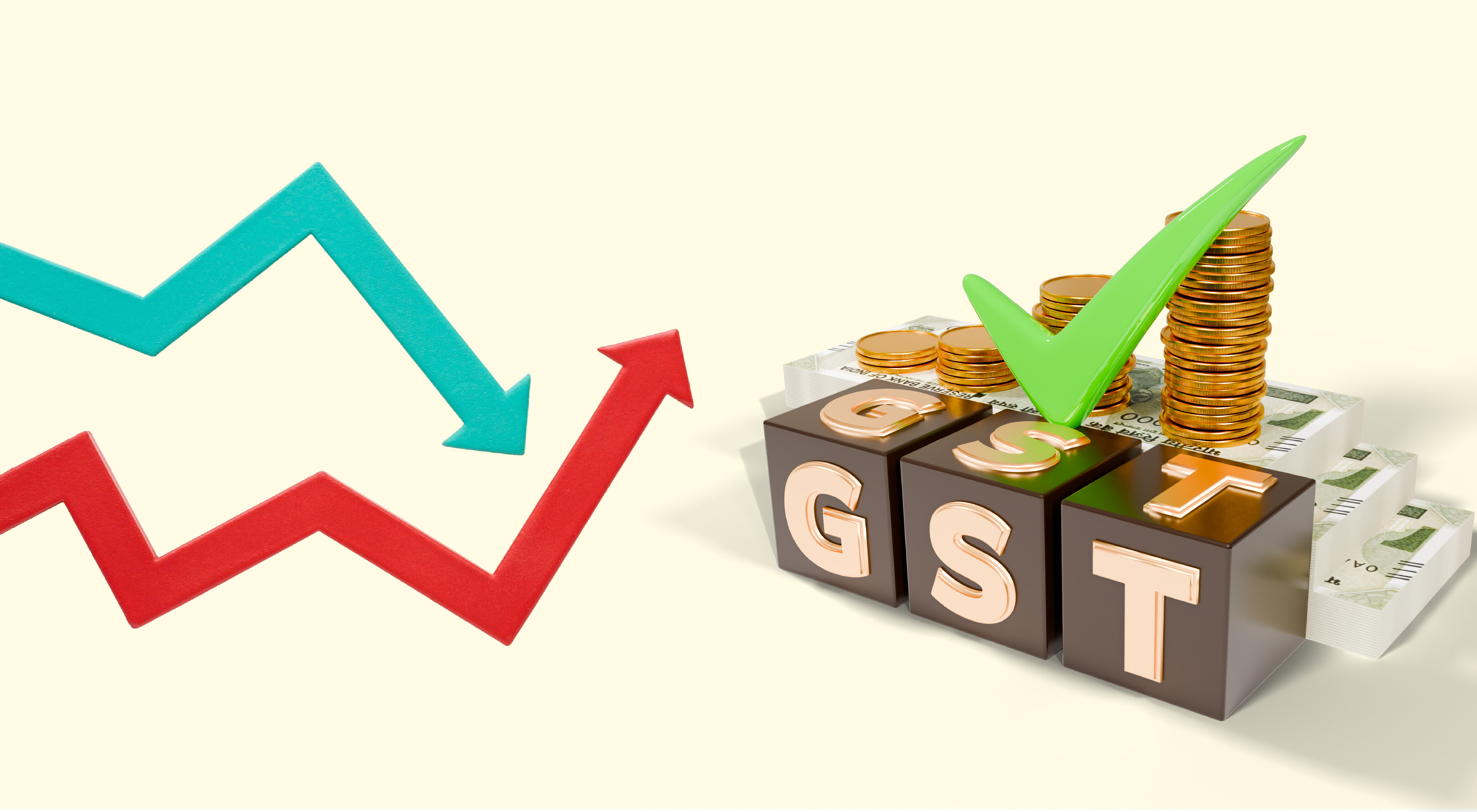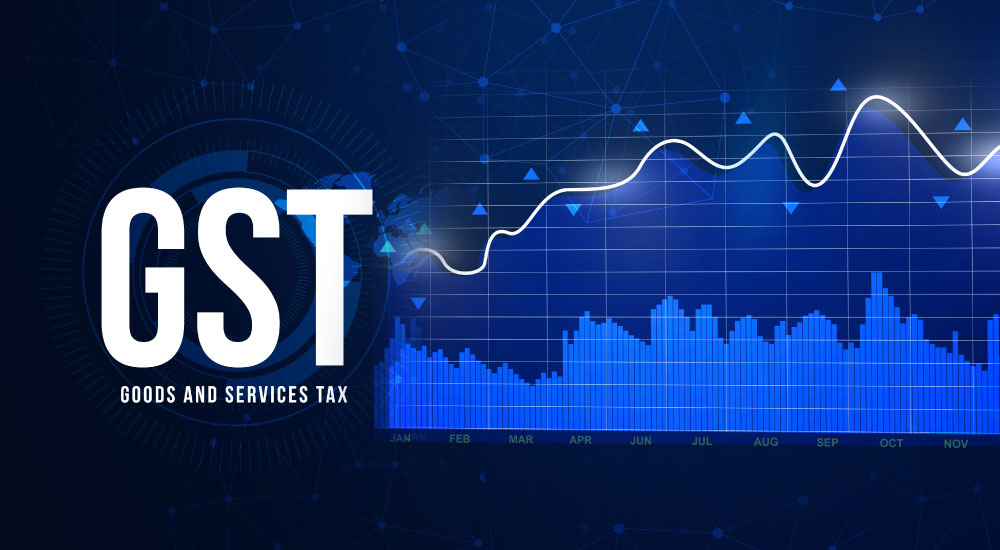The Indian government has implemented major changes to the Goods and Services Tax (GST) framework, marking the arrival of GST 2.0 reforms. These reforms, finalized at the 56th GST Council meeting, introduce strategic rate reductions and structural simplifications aimed at providing tangible relief to sectors such as textiles, fertilizers, food items, and education.
Understanding the need for GST 2.0 reforms
The timing of these reforms couldn't be more crucial. With the United States imposing 50% tariffs on Indian exports, domestic industries are grappling with increased competitive pressures. The GST 2.0 reforms represent a strategic response to these challenges, focusing on sectors that require immediate support to maintain their global competitiveness.
Textile sector: Strong relief for manufacturers
GST on textiles has been cut to 5% across multiple categories, including:
-
Man-made fibers
-
Wool products
-
Cotton and cotton-based products
-
Apparel and clothing
Impact on businesses:
-
Resolves inverted duty structure (inputs taxed higher than outputs)
-
Improves working capital and cash flow for weavers, loom operators, and garment makers
-
Enhances export competitiveness amid rising international tariffs
Export competitiveness
With Indian textile exports already facing headwinds from international tariffs, these GST reductions help manufacturers offer more competitive pricing. The improved cost structure is particularly beneficial for export-oriented businesses looking to maintain their market share in challenging international conditions.
Fertilizer industry: Supporting agricultural input costs
GST has been reduced from 12% to 5% on:
-
- Urea
- Single Super Phosphate (SSP)
- Diammonium Phosphate (DAP)
- Muriate of Potash (MOP)
- Complex fertilizers
- Key raw materials (sulphuric acid, nitric acid, ammonia)
Economic impact
This rate reduction serves multiple economic objectives:
For fertilizer companies:
- Lower production costs
- Improved profit margins
- Better cash flow management
- Resolution of inverted duty structure issues
For farmers:
- More affordable access to essential agricultural inputs
- Reduced farming costs
- Better agricultural productivity potential
For the government:
- Reduced subsidy burden
- More efficient resource allocation
The change has particularly addressed the problematic inverted duty scenario where raw materials faced higher taxation than finished fertilizers, leading to refund delays and operational inefficiencies.
Food items: Moved towards zero tax
Essential food products will now see drastic cuts:
-
Nil GST: Chapati, roti, paratha, pizza bread, khakra, UHT milk, paneer
-
5% (down from 18%): Butter, ghee, ice cream, jam, juices, biscuits, cereals, confectionery, packaged water, namkeen
-
5% (down from 12%): Cheese, plant-based and soya milk drinks
Consumer benefits
This move directly impacts household budgets by:
- Reducing the cost of essential food items
- Making packaged food products more affordable
- Supporting nutritional accessibility for all income groups
- Simplifying the tax structure for food products
Business implications
Food manufacturers and retailers benefit from:
- Simplified compliance requirements
- Improved demand due to lower prices
- Reduced administrative burden
- Better inventory management without complex tax calculations
Education sector: Supporting learning resources
Educational or stationary items are now exempt - from 12% GST to Nil rate, including:
- Maps and atlases
- Globes and hydrographic charts
- Exercise books and laboratory notebooks
- Pencil sharpeners and graph books
- Pencils, crayons, and pastels
- Tailor's chalk
- Wall charts and drawing charcoals
Educational impact
This change supports educational accessibility by:
- Reducing the cost burden on students and families
- Making educational materials more affordable for schools
- Supporting the government's education initiatives
- Encouraging the use of diverse learning resources
Healthcare: Critical relief
Reduced rates on medicines and medical devices improve access to healthcare and support domestic manufacturing in the pharma and medical equipment sectors.
- 33 life-saving drugs, diagnostic kits: 12% → 0%.
- Other medicines including Ayurveda, Unani, Homoeopathy: 12% → 5%.
- Spectacles and corrective goggles: 28% → 5%.
- Medical oxygen, thermometers, surgical instruments: 12–18% → 5%.
- Medical, dental, and veterinary devices cut from 18% to 5%.
This makes essential healthcare and insurance more affordable while improving accessibility.
Other key reductions
-
Household goods: Shampoo, soap, toothpaste, hair oil, talcum powder → 5% (down from 18%)
-
Stationery: Notebooks, erasers, crayons, maps → Nil (down from 12%/5%)
-
Electronics: ACs, dishwashers, TVs → 18% (down from 28%)
-
Automobiles: Motorcycles up to 350cc, small hybrids → 18% (down from 28%); EVs remain at 5%
-
Agriculture: Tractors, irrigation machinery, biopesticides → 5% (down from 12–18%)
Automobile sector
Clearer classification of vehicles and auto parts cut down disputes, improve compliance, and support growth in India’s automotive manufacturing and exports.
- Small cars, two-wheelers ≤350cc: 28% → 18%.
- Buses, trucks, three-wheelers, all auto parts: 28% → 18%.
Service sector
Lower GST on hotel stays, gyms, salons, and yoga services has reduced wellness costs for citizens, by improving access to wellness, and giving a fillip to the hospitality and service industries.
- Hotel stays up to ₹7,500/day from 12% to 5%.
- Gyms, salons, barbers, yoga GST cut from 18% to 5%.
Health and life insurance
GST exemptions on life and health insurance premiums has expanded the financial protection to individuals and supports the vision of Mission Insurance for All by 2047.
- GST exemption on premiums for individual life insurance, health insurance, floater plans, and senior citizen policies.
What is costlier with GST 2.0?
While essentials got cheaper, the 40% slab ensures luxury and harmful goods face higher taxation:
-
Aerated & caffeinated drinks – 40% (from 28%)
-
Large cars, high-end bikes, yachts, personal aircraft – 40% (from 28%)
-
Sugar-sweetened beverages – 40% (from 28%)
-
Casinos, gambling, online gaming, IPL tickets – 40%
-
Tobacco products – moved to 40% once cess repayment ends
Resolving structural issues
Beyond rate reductions, GST 2.0 has addressed fundamental structural problems in the old GST system:
Inverted duty structure
The reforms has tackled situations where input materials face higher tax rates than finished products. This has been a persistent issue causing:
- Working capital blockages
- Delayed refund processing
- Administrative complications
- Reduced business efficiency
Compliance simplification
The new structure aims to:
- Reduce the number of different tax rates
- Simplify filing procedures
- Minimize disputes and interpretations
- Improve overall tax administration
Economic implications of GST 2.0 reforms
Sectoral growth
Each targeted sector stands to benefit from improved competitiveness:
- Textiles can better compete in global markets
- Fertilizer industry can support agricultural productivity
- Food sector can contribute to nutrition and affordability
- Education materials become more accessible
Inflation management
By reducing taxes on essential items, these reforms can help manage inflationary pressures on household budgets while maintaining tax revenue through improved compliance and economic growth.
Revenue impact
While lower rates might initially reduce tax collection, the government expects:
- Improved compliance due to simplified structure
- Economic growth leading to higher overall tax base
- Reduced administrative costs
- Better resource allocation
Preparing for GST 2.0: Business considerations
Organizations should prepare for these changes by:
Actions before 22nd September:
- Reviewing old tax structures and implications
- Updating accounting and billing systems
- Training finance teams on new rates
- Communicating changes to customers and suppliers
Strategic planning:
- Reassessing pricing strategies
- Evaluating supply chain implications
- Planning cash flow improvements
- Considering expansion opportunities
The path forward
GST 2.0 has been a big step towards a simpler and more business-friendly tax system. By fixing sector-specific issues and reducing structural gaps, these reforms aim to boost growth while easing compliance for businesses.
For industries like textiles, fertilizers, food, and education, the changes mean better cash flow, improved competitiveness, and more opportunities to grow.
As India faces global economic challenges, GST 2.0 shows the government’s intent to keep tax policies responsive and practical. The focus now is on optimisation, not just implementation—helping businesses thrive while supporting the country’s growth journey.
Key takeaways from GST 2.0 reforms
-
Textiles: GST has been reduced to 5%, easing working capital pressures and boosting the sector’s competitiveness in global markets.
-
Fertilizers: Rates cut from 12% to 5%, lowering production costs and making farm inputs more affordable for farmers.
-
Food Essentials: Items like milk, paneer, roti, and paratha now attract nil GST, directly reducing household expenses.
-
Education Supplies: Notebooks, pencils, maps, and charts move to zero GST, making essential learning tools more accessible and affordable for students.
-
Overall Impact: The reforms introduce a simpler tax structure, resolved the inverted duty issue, accelerated ITC refunds, and lowered compliance burdens—resulting in improved business cash flow and tangible savings for consumers.
Check out: GST New vs Old Rates


















